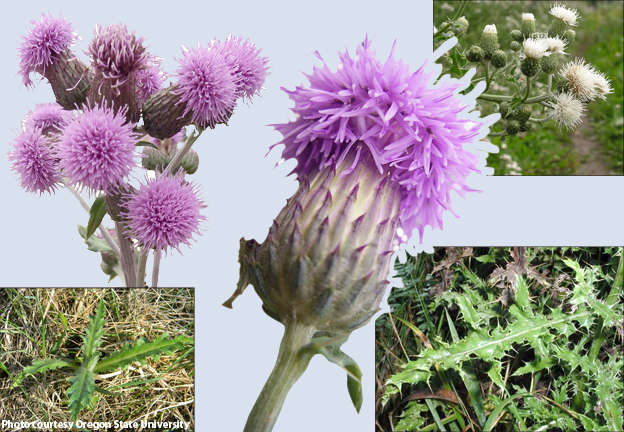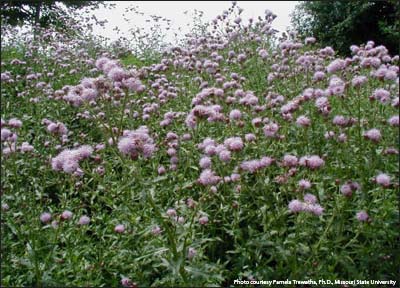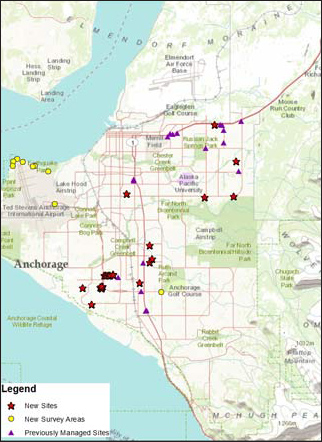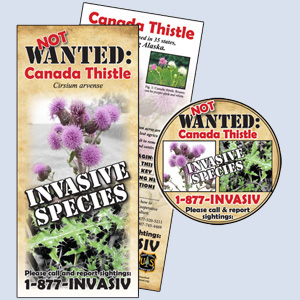Invasive Plants and Agricultural Pest Management
Welcome to Alaska's Invasive Plant Program. Our program coordinates prevention, outreach and management strategies for invasive plant issues through collaboration with land managers, agencies, organizations and policy makers across Alaska. These efforts are guided by the implementation of our Strategic Plan and relevant noxious weed regulations and policies. Our goal is to help keep Alaska's pristine landscapes and natural resources free from impacts of noxious and invasive plants.
PMC Programs
- PMC Home Page
- Horticulture
- Industrial Hemp
- Invasive Plants
- Plant Pathology
- Potatoes
- Potato Program
- Certified Seed Potato Production
- Disease Risk Monitoring
- Publications and Reports
- Late Blight Management Plan for Alaska, 2005
- 2017 AK Potato Seed Certification Handbook
- 2018 AK Certified Seed Potato Growers
- 2018 Potato Postharvest Processing Evaluation Report
- Potato Variety Trial Project 2013
- 2015 Field Potato Evaluation
- 2016 Potato Germplasm Winter Growout
- Download .zip video of 2014 Potato Symposium Meeting
- Resources
- Revegetation
- Seed Production
- Soil Conservation
- Publication List
- Native Plant Source Directory
- PMC Staff Directory
- PMC Weather Station

5310 S Bodenburg Spur
Palmer, AK 99645
Phone: 907-745-4469
Fax: 907-746-1568
Mon. - Fri.
8 a.m. - 4 p.m.
Click Map For Directions
View Larger Map
Canada thistle (Cirsium arvense)
AK Natural Heritage Program Invasiveness Ranking: 76
Identified as a prohibited noxious weed in Alaska (11 AAC 34.020), and in 34 other states.
The Alaska Division of Agriculture classifies Canada thistle as a Top Priority invasive species for control, eradication and prevention.
- Biology
- Impact
- Distribution
- Taking Action
- Resources
- • Perennial
- • Grows 1-4 feet tall
- • Flowers are typically purple, but can be white or pink; bracts are tipped with prickles
- • Leaves are distinctively spiny, lance-shaped, wooly hairs on the underside and hairless on top
- • Deep, wide-spreading roots
- • The only thistle that is dioecious (separate male and female plants)

Canada thistle is not native to Alaska and it threatens natural plant communities by directly competing for resources and displacing native vegetation. Canada thistle plants produce allelopathic chemicals which can inhibit the growth of other plants in close proximity. It's dense, rhizomatous growth has the potential to impact natural and agricultural resources statewide.
- Canada thistle:
- • Displaces native vegetation through competition for nutrients
- • Decreases agricultural production
- • Destroys yards, gardens and parks
- • Degrades natural habitats
- • Expensive to manage

Habitat: Fields, pastures, meadows, roadsides and disturbed areas. Common at low to middle elevations, mostly in agricultural areas.
- To help prevent the spread of Canada thistle:
- •Report any sightings to 1-877-INVASIV
- • Organize neighborhood weed pulls
- • Pass the word along about C. thistle to neighbors
- • Use Weed Free Hay and Straw
- • Wash your vehicle before re-entering the state
- • Check pet fur for seeds before leaving an area
- • Check potted plants for invasives growing in their pots before you purchase
- Canada thistle 2013 report
- Canada thistle 2014 report
- Canada thistle 2015 report
- Download a Canada thistle fact-sheet from the US Forest Service
- A Close-Up View of the Canada Thistle, Cirsium arvense
- Different stages of male and female Canada thistle
- View our Canada thistle rack card by clicking on the image below:


